Whether you’re training for your first 5K, aiming to set a personal record in a half marathon, or simply jogging around the neighborhood for exercise and stress relief, having the right pair of running shoes can make all the difference. The wrong shoes may lead to discomfort, blisters, or even injuries; whereas the right ones will help you run efficiently, protect your feet and joints, and keep you motivated to lace up day after day.
But with so many running shoes on the market—varying in cushioning, support, materials, and style—how do you find that perfect pair? In this in-depth guide, we’ll explore the factors you need to consider, from understanding your foot type and running goals to testing shoes properly in-store. By the end, you’ll be empowered to pick a shoe that feels comfortable, suits your biomechanical needs, and helps you stay enthusiastic about running.
1. Define Your Running Goals and Terrain
Before you start shopping, think about how and where you plan to run:
- Road Running: If you primarily run on pavement or treadmill, you’ll need shoes designed for smoother surfaces—often lighter, with substantial cushioning and flexible soles.
- Trail Running: If you frequent unpaved trails or mountainous paths, you need shoes that have rugged outsoles with good traction, extra foot protection (toe caps, rock plates), and stable constructions for uneven ground.
- Track or Race-Specific: Competitive runners might consider racing flats or spikes for track events. These tend to be ultra-light, with minimal cushioning, designed for speed over shorter distances.
- Everyday Training vs. Speed Work: If you do everyday mileage, a well-cushioned, durable trainer is best. But if you incorporate tempo runs or interval training, you might want a lighter, more responsive pair for faster turnover.
Identifying your running terrain and the type of workouts you do sets the foundation for the style of shoe you need.
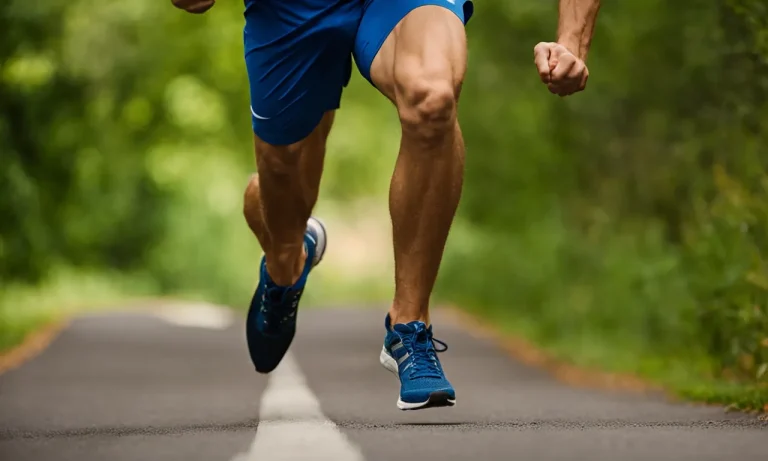
2. Understand Your Foot Type and Gait
a) Arch and Pronation
Everyone’s foot structure is unique, and understanding the arch shape (low, normal, or high) and pronation pattern can be vital in choosing suitable support:
- Flat/Low Arches: Often associated with overpronation (the foot rolls inward excessively). Many shoe brands offer “stability” or “motion control” models with firmer medial (inner) support to guide the foot into a more neutral strike.
- Neutral/Normal Arches: A moderate arch that can adapt well to different shoe types. Many runners in this category do well in “neutral” shoes, which have balanced cushioning and no extra arch support.
- High Arches: Tends to underpronate (or supinate), meaning the foot rolls outward, placing stress on the outer foot. Shoes with good shock absorption or “cushion” lines help distribute impact and prevent foot and lower leg injuries.
You can check your arch type via a wet foot test (stepping on a piece of paper with a wet foot) or consult a running store for a gait analysis on a treadmill. Some specialized running stores offer video gait assessments that help detect pronation levels. Armed with this information, you can narrow your shoe selection to models tailored for your arch type and pronation pattern.
b) Stride and Footstrike
Beyond arch shape, your footstrike (heel, midfoot, or forefoot) can impact the shoe features you prioritize:
- Heel Strikers: Often benefit from extra heel cushioning, as this area absorbs more impact.
- Midfoot/Forefoot Strikers: May prefer shoes with more balanced cushioning along the entire length or a slightly lower heel-to-toe drop to facilitate that forward landing.
3. Consider Heel-to-Toe Drop
Heel-to-toe drop (often shortened to “drop” or “offset”) is the height difference between the heel and the forefoot in a shoe:
- A traditional running shoe may have a drop of around 10–12 mm, placing the heel higher to enhance shock absorption for heel strikers.
- Lower drop shoes (4–8 mm) encourage a more forward footstrike, potentially reducing stress on the knees but increasing strain on the calves and Achilles.
- Zero drop shoes place the heel and forefoot at the same level, which can promote a natural midfoot strike but demand more from your foot and lower-leg muscles.
Your preference for drop may depend on your natural gait, injury history, and comfort. If you’re new to a lower drop, transition gradually to let your calf muscles and Achilles adapt.
4. The Importance of Proper Fit
a) Overall Comfort
Nothing trumps a shoe that feels comfortable the moment you put it on. Although some break-in may happen, running shoes shouldn’t pinch or feel overly tight. If the shoe is uncomfortable in the store, it’s unlikely to improve significantly during training. Important fit checkpoints:
- Toe Box: Ensure enough space for your toes to splay naturally, especially during the toe-off phase. A cramped toe box may lead to blisters or black toenails.
- Midfoot: Should feel snug but not constrictive. The shoe’s lacing system can help you adjust the lock.
- Heel: Look for a secure heel counter. The heel shouldn’t slip excessively while walking or jogging. Minimal slip can happen, but it shouldn’t feel unstable.
b) Sizing Tips
- Measure Both Feet: Sometimes one foot is slightly larger. Always fit shoes to your larger foot.
- Try Shoes with Running Socks: The thickness of your socks can change how the shoe fits.
- Allow Wiggle Room: A rule of thumb is about a thumb’s width of space at the front to accommodate foot expansion while running.
c) Time of Day
Feet tend to swell slightly throughout the day, particularly after activity. It’s wise to try on running shoes after a short walk or in the afternoon to mimic how your feet might feel during a run.
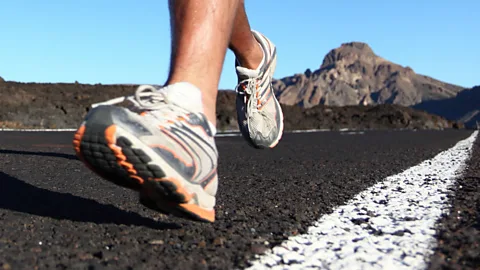
5. Cushioning vs. Responsiveness
a) Plush Cushioning
Some runners love a plush ride that soaks up impact forces, particularly beneficial for joint protection or those with longer runs on concrete or asphalt. Brands like Hoka One One emphasize thick, soft midsoles. The advantages include shock absorption and comfort for high-mileage or recovery runs, but the downsides can be less ground feel and potentially heavier weight.
b) Responsive or Minimal Cushioning
On the other end of the spectrum, shoes with firmer, more responsive midsoles keep you connected to the ground, encouraging a quick turnover. They can be lighter, favored for speedwork or racing. Minimal or barefoot-style shoes go even further, providing extremely thin soles that rely heavily on the runner’s own foot strength for shock absorption. These can help build foot muscles but come with an elevated risk of injury if you transition too quickly.
c) Hybrid or Balanced Cushioning
Many modern running shoes aim to strike a balance, offering moderate cushioning without sacrificing responsiveness. This middle ground often suits everyday training, letting you handle a variety of runs—from easy jogs to tempo sessions—without feeling too squishy or too hard.
6. Support and Stability Features
a) Traditional Stability Elements
Historically, “stability shoes” used medial posts—firmer foam on the shoe’s inner side—to control overpronation. Some motion control shoes even had rigid plastic inserts. These elements can be helpful for runners with significant inward rolling who benefit from added support. However, not every runner with flat arches needs these, and sometimes too much correction can lead to new imbalances.
b) Modern Guidance Systems
Many brands have shifted toward guide rails or “dynamic support,” which only engage when the foot veers out of alignment, providing a more fluid and individualized form of stability. If you need stability but dislike the feel of a rigid post, look for these modern solutions.
c) Neutral Shoes for the Unfussy Foot
If you have no major pronation issues or injuries, a neutral shoe is often the simplest, letting your foot move naturally while relying primarily on midsole cushioning for shock absorption.
7. The Shoe Upper: Breathability and Lockdown
a) Materials
The shoe’s upper—the part around your foot above the sole—can be made from mesh, knit, or engineered fabrics. For warm climates or sweaty feet, a lightweight, breathable mesh helps keep you cool and reduces moisture buildup. In colder or wet conditions, you might prefer water-resistant or thicker uppers.
b) Structure and Fit
Look for a snug fit around the midfoot and heel to prevent slippage, but enough room in the toe box. Many shoes now use seamless or minimal-seam designs that reduce the risk of friction. The lacing system also matters—an effective system can help you customize the tension across different parts of your foot, thereby preventing pinching or hot spots.
c) Reflectivity and Extra Features
Some brands include reflective details for better visibility in low-light conditions. Others might have gaiter attachments for trail running in muddy or sandy environments. Consider these extras if they align with your routine (e.g., running early morning or night, or tackling rugged trails).
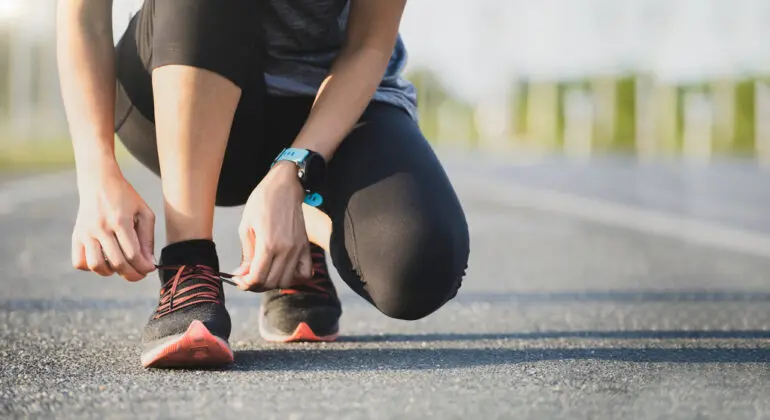
8. Weight and Durability
a) Weight Considerations
Lighter shoes can enhance speed and reduce fatigue, especially over longer distances. However, shedding weight sometimes means less cushioning or support. For many runners, an everyday trainer might weigh 8–10 ounces (men’s size 9) or 6–8 ounces for women. Racing shoes can weigh even less, while highly cushioned or stability shoes may tip the scale at over 10 ounces.
b) Lifespan
A typical pair of running shoes is expected to last 300–500 miles before the midsole cushioning significantly breaks down. Lighter, more minimal shoes might wear out faster. Keep track of your mileage and watch for signs like flattened foam, uneven wear, or new aches—these can indicate it’s time to retire your shoes.
9. Trying Shoes in a Store: The Right Approach
a) Bring Your Old Shoes
If possible, bring your current running shoes to a specialty store. The wear pattern on the outsole or midsole can reveal clues about your pronation or footstrike. Staff can then recommend suitable upgrades or brand alternatives based on that info.
b) Wear Your Usual Running Socks
Test the shoe under the same conditions you’ll be using them. Thick or thin socks can significantly change the fit. Also, if you use orthotics or custom insoles, bring those to ensure compatibility.
c) Test with a Short Run or Jog
Many running stores allow you to jog a short distance on a treadmill or a small track. This helps you sense how the shoe behaves under dynamic load, not just standing still. Pay attention to any rubbing or pressure points that might magnify during real runs.
d) Don’t Rush the Decision
Try multiple brands and models, and spend a few minutes walking and jogging in each. The best choice often becomes clear once you compare the differences in comfort and support.
10. Brand Loyalty vs. Openness
While brand loyalty can simplify decisions, be open to trying different labels. Each brand has distinct design philosophies and fits. For instance:
- Nike often leans toward narrower shapes (though some lines differ).
- Asics focuses on reliable stability features and plush rides.
- Adidas may feature Boost foam for responsiveness and energy return.
- New Balance and Brooks often emphasize broad fit options and consistent midsole cushioning.
- Hoka One One is known for maximalist cushion, while Altra champions zero drop and foot-shaped toe boxes.
Take advantage of store staff expertise and personal fit rather than picking a shoe solely based on brand marketing.
11. Budget Considerations
a) Price Ranges
A decent pair of running shoes typically costs between $80 and $150. Premium models can exceed $160–$200, especially if they feature cutting-edge foams, carbon plates (in racing shoes), or unique tech. Cheaper shoes under $60 often use lower-quality materials that break down faster or provide inconsistent support.
b) Sales and Closeout Models
Last season’s colorways or “end-of-line” models can see significant discounts. If a particular model works well for you, buying older color versions is a great way to save money while still getting premium technology.
c) Investing in Your Health
Your shoes directly impact comfort, injury risk, and enjoyment of running. While it might be tempting to go with the cheapest option, investing a bit more in a shoe that truly fits and supports your needs can pay off in fewer medical bills and more consistent training.
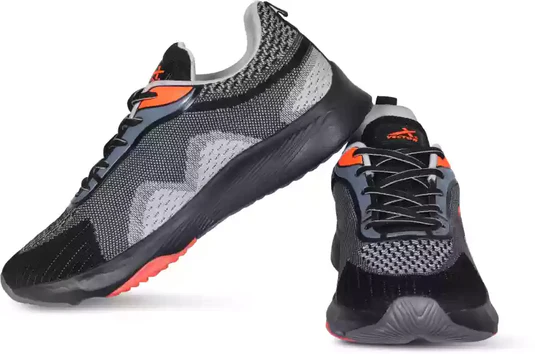
12. Rotating Multiple Shoes
Some serious runners rotate two or more pairs of shoes, which has advantages:
- Reduced Wear: Each shoe gets more rest between runs, which can extend overall life.
- Variety in Stress: Different shoes place slightly different stress on your legs, reducing repetitive strain.
- Terrain-Specific: One pair for roads, another for trails, or a separate lightweight pair for speedwork.
While not mandatory for beginners, as your mileage and experience grow, consider adding a second pair to your arsenal.
13. Common Running Shoe Mistakes
a) Sizing Too Small
Running shoes typically need a bit more space than casual shoes. If your toes are cramped, you’ll risk black toenails, blisters, and discomfort, especially on longer runs or hot days when your feet swell.
b) Ignoring Replacement Time
Continuing to run in shoes well past their prime can lead to injuries because the cushioning and stability degrade. Even if the outsole looks okay, the midsole can be worn out internally. Keep track of approximate mileage and how your body feels (e.g., new aches in knees, hips, or ankles may indicate it’s time for a fresh pair).
c) Overemphasizing Style
Aesthetics do matter, but prioritize fit and function. A gorgeous shoe that gives you foot pain isn’t worth it. Look for color options that match your style only after you’ve confirmed that the shoe meets your biomechanical needs.
14. Breaking Them In
Although running shoes generally require less break-in than many other footwear types, it’s still wise to ease in:
- Start with shorter runs—maybe 2–3 miles—to let your feet adapt to the new shoe’s shape, cushioning, and support.
- Alternate with your old shoes for a week or two, gradually increasing usage of the new pair.
- Monitor for any hot spots or discomfort. Minor rubbing might resolve as the materials relax, but persistent pain signals a mismatch in size or fit.
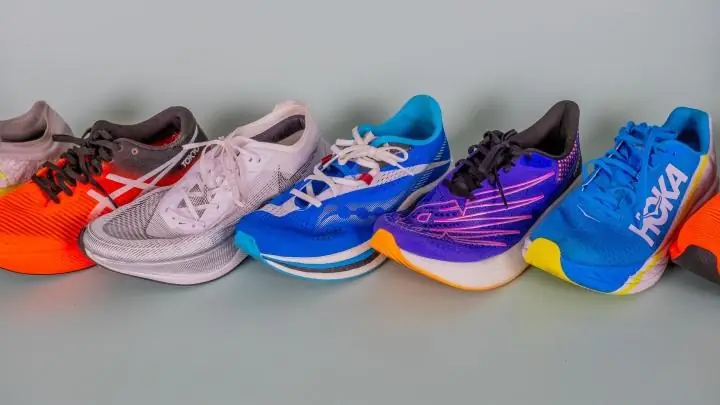
15. Conclusion
Selecting the right running shoes can be a game-changer for your comfort, performance, and long-term health. By identifying your foot type, prioritizing proper fit, and considering factors such as cushioning, stability features, and heel-to-toe drop, you increase the odds of finding a pair that aligns perfectly with your running style. Don’t forget to test them thoroughly—ideally, in a store offering gait analysis or a treadmill trial—and to remain open-minded about brands and models.
Your running journey is deeply personal. The ideal shoe for someone else may not suit you at all. Listen to your body—aches or persistent blisters may indicate a poor match. Meanwhile, a shoe that fits like a glove and feels great underfoot can boost your motivation and carry you confidently across countless miles. Factor in your budget, the surfaces you run on, and the type of training or races you plan to pursue. And remember, even the best shoe needs replacement every few hundred miles to keep your feet protected.
Ultimately, the best running shoes are the ones that let you run happily and consistently without pain. By paying attention to the details in this guide, you’ll be well on your way to finding your perfect match—so you can focus on what really matters: enjoying the run, chasing your goals, and improving your physical and mental well-being through this timeless sport. Happy running, and may your next pair of shoes help you fly over the pavement or trails with comfort and confidence!
